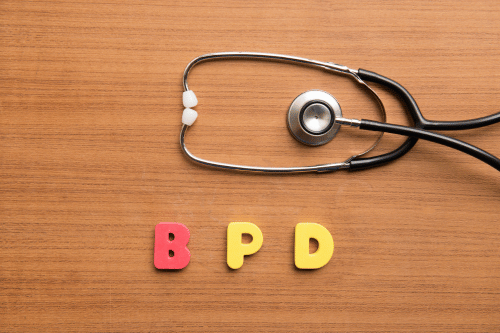Petulant BPD: Understanding the Complexity of this BPD Subtype
Introduction
Petulant BPD, or petulant borderline personality disorder, is a distinct and challenging subtype of borderline personality disorder (BPD). Characterized by emotional outbursts, intense mood swings, defiant behavior, and feelings of being mistreated, individuals with this mental health condition struggle with relationships and self-esteem.
Petulant personality disorder has been linked to certain gene variations related to serotonin, which can increase susceptibility, especially when combined with adverse childhood experiences. As one of the recognized BPD subtypes, it demands specialized treatment and attention to help those affected lead healthier lives. In this article, we explore the symptoms, causes, and treatment options for petulant BPD, offering valuable insights for individuals, families, and healthcare providers.
What is Petulant Borderline Personality Disorder?

Petulant BPD is classified as a subtype within the broader category of personality disorders, specifically BPD. Borderline personality disorder affects how people perceive and manage emotions, leading to significant interpersonal difficulties. Petulant BPD adds another layer of complexity with behavioral traits such as passive aggression, emotional instability, and chronic low self-esteem.
Diagnostic Criteria and BPD Subtypes
The American Psychiatric Association’s Diagnostic and Statistical Manual (DSM) outlines the diagnostic criteria for borderline personality disorder, including the petulant subtype. These criteria help mental health professionals distinguish between petulant BPD and other subtypes, such as discouraged or self-destructive BPD. Petulant BPD stands out because of its combination of defiance, explosive anger, and the tendency to express frustration indirectly through passive-aggressive behavior.
Key Symptoms of Petulant BPD
Individuals with petulant borderline personality disorder display several defining symptoms, which often result in significant emotional distress. Petulant BPD symptoms are characterized by intense mood swings, defiant behavior, and feelings of being mistreated:
Explosive Anger and Emotional Outbursts: People with petulant BPD may experience sudden emotional outbursts and find it difficult to control their anger. These intense emotions can lead to strained interpersonal relationships.
Passive-Aggressive Behavior: Instead of confronting problems directly, individuals may act in subtle, obstructive ways to express their frustrations.
Chronic Low Self-Esteem: Those with petulant BPD often feel inadequate or insecure, contributing to a sense of extreme dissatisfaction with themselves and their lives.
Unstable Relationships: Maintaining healthy relationships is challenging due to emotional instability and more frequent angry mood swings.
Intense Fear of Abandonment: This fear leads to emotional outbursts and self-destructive behaviors when individuals believe they are at risk of losing important relationships.
These symptoms can overlap with other mental health conditions, which makes receiving a formal diagnosis from a mental health professional crucial.

Causes and Risk Factors
Like many personality disorders, petulant BPD stems from a mix of neurobiological and environmental factors.
Neurobiological Factors
Research suggests that brain chemistry, particularly in regions responsible for emotion regulation, may contribute to the development of BPD subtypes. Neurobiological differences can make individuals more prone to mood swings, emotional instability, and impulsive behaviors. Additionally, certain gene variations related to serotonin can increase susceptibility to developing petulant personality disorder, especially when combined with adverse childhood experiences.
Environmental Factors
Environmental factors such as childhood trauma, family conflict, or unstable caregiving environments are commonly linked to personality disorders. Early childhood experiences, especially the development of insecure attachment styles, play a significant role in shaping emotional responses in adulthood. Exposure to these factors can lead to the development of borderline personality disorder.
Co-Occurring Conditions

Many people with petulant BPD also struggle with other mental health disorders, such as depression, anxiety, or substance abuse. The emotional instability associated with BPD can make it difficult to manage these co-occurring conditions without professional treatment.
Diagnosis and Assessment
Diagnosing petulant borderline personality disorder (BPD) can be a complex process, as the symptoms often overlap with other mental health conditions. A comprehensive diagnosis typically involves a combination of clinical interviews, psychological assessments, and behavioral observations. A mental health professional will evaluate the individual’s symptoms, behavior patterns, and medical history to determine if they meet the diagnostic criteria for petulant BPD.
The Diagnostic and Statistical Manual of Mental Disorders, Fifth Edition (DSM-5) provides the standard criteria for diagnosing BPD. To receive a diagnosis of petulant BPD, an individual must exhibit at least five of the following symptoms:
Severe mood swings
Emotional outbursts
Passive-aggressive behavior
Defiance
Inability to regulate emotions
Fear of abandonment
Impulsivity
Unstable relationships
Self-image disturbance
Suicidal behavior
A mental health professional will also assess the individual’s behavior patterns, including their relationships, work or school performance, and daily functioning. They may use standardized assessment tools, such as the Borderline Personality Disorder Severity Index (BPDSI), to evaluate the severity of the symptoms. Accurate diagnosis is crucial for developing an effective treatment plan tailored to the individual’s needs.
Treatment Options for Petulant BPD
Managing petulant BPD requires a comprehensive treatment approach focusing on emotional regulation, relationship building, and behavior modification.
1. Dialectical Behavior Therapy (DBT)
Dialectical behavior therapy is the gold standard treatment for individuals with BPD subtypes. DBT emphasizes skills like distress tolerance, emotion regulation, and interpersonal effectiveness, which help individuals better manage emotional outbursts and mood instability.
2. Group Therapy
Group therapy provides a safe environment for individuals to share their experiences and practice interpersonal skills. People with petulant BPD often benefit from connecting with others facing similar challenges, learning to navigate their emotions more effectively within social contexts.
Treatment for Substance Abuse
Since substance abuse is a common coping mechanism for individuals with petulant BPD, integrated treatment plans are crucial. Treatment centers specializing in co-occurring disorders provide care that addresses both addiction and mental health conditions.
4. Medication Management
Although there is no specific medication for BPD, mood stabilizers and antidepressants can help reduce the severity of mood swings and emotional instability. Mental health professionals may also prescribe medications to treat co-occurring mental health disorders.
5. Professional Treatment Centers
Seeking treatment at specialized mental health facilities ensures that individuals with petulant BPD receive comprehensive care. These centers often provide a combination of individual therapy, group therapy, and holistic approaches to promote long-term recovery.
Challenges and Considerations
Treating petulant BPD can be challenging due to the complexity of the symptoms and the individual’s behavior patterns. Some of the key challenges and considerations include:
Resistance to Treatment: Individuals with petulant BPD may be resistant to treatment due to their fear of abandonment or rejection. This resistance can make it difficult to establish trust and engage in therapeutic work.
Comorbidities: Petulant BPD often co-occurs with other mental health conditions, such as depression, anxiety, or substance abuse. These comorbidities can complicate the treatment process and require integrated care approaches.
Emotional Dysregulation: Individuals with petulant BPD may experience intense emotional episodes, which can be difficult to manage in a therapeutic setting. These episodes can hinder progress and require specialized strategies for emotional regulation.
Therapeutic Relationship: Building a therapeutic relationship with an individual with petulant BPD can be challenging due to their fear of abandonment and rejection. Establishing a strong, supportive therapeutic alliance is essential for effective treatment.
To overcome these challenges, mental health professionals may use specialized therapeutic approaches, such as dialectical behavior therapy (DBT). DBT focuses on teaching individuals skills to manage emotions, tolerate distress, and improve relationships, making it particularly effective for those with petulant BPD.
Living with Petulant BPD
People with petulant BPD experience significant challenges in their day-to-day lives, especially when managing emotions and maintaining relationships. Common issues include:
Self-Harming Behaviors: Emotional distress may lead to impulsive behavior, including self-harm or suicidal threats.
Interpersonal Difficulties: Relationships are often turbulent due to angry mood swings and intense emotions.
Emotional Instability: The inability to regulate emotions results in frequent emotional outbursts and more angry mood swings.
These difficulties highlight the importance of professional support and effective treatment to improve emotional well-being.
Supporting Someone with Petulant BPD
Caring for a loved one with petulant BPD requires patience, understanding, and consistent support. Here are some ways to provide meaningful help:
Encourage Professional Treatment: Professional care is essential for managing mood instability and developing healthier emotional responses.
Promote the Use of Coping Strategies: Encourage the individual to practice techniques learned in therapy, such as distress tolerance and emotion regulation.
Maintain Healthy Boundaries: While it’s important to be supportive, maintaining boundaries helps prevent burnout and promotes healthier relationships.
Be Empathetic and Patient: Understanding the emotional challenges faced by individuals with petulant BPD can foster a more supportive environment for recovery.
Finding the Right Therapist
Finding the right therapist is crucial for the effective treatment of petulant BPD. When searching for a therapist, consider the following factors:
Experience: Look for a therapist with experience in treating borderline personality disorder and petulant BPD. An experienced therapist will be better equipped to understand the nuances of the condition and provide effective treatment.
Training: Ensure the therapist has received training in specialized therapeutic approaches, such as DBT or cognitive-behavioral therapy (CBT). These therapies are particularly effective for managing the symptoms of petulant BPD.
Approach: Consider a therapist who uses a collaborative and non-judgmental approach. Building a trusting therapeutic relationship is essential for individuals with petulant BPD, who may fear abandonment or rejection.
Availability: Ensure the therapist has availability to accommodate your schedule and needs. Consistent therapy sessions are important for making progress in treatment.
You can find a therapist through:
Online Directories: Resources like the National Alliance on Mental Illness (NAMI) or the American Psychological Association (APA) offer directories of qualified therapists.
Referrals: Ask for referrals from friends, family, or healthcare professionals who may know experienced therapists.
Insurance Providers: Check with your insurance provider for a list of covered therapists who specialize in treating borderline personality disorder.
The Role of Mental Health Professionals
Mental health professionals play a vital role in diagnosing and treating petulant BPD. They provide personalized care plans and ensure individuals receive the support they need to manage their mental health condition effectively. Involving a mental health professional early in the treatment process is essential to prevent symptoms from worsening.
Overcoming Stigma and Shame
Petulant BPD is often stigmatized due to the intense emotional episodes and impulsive behavior associated with the condition. Individuals with petulant BPD may experience shame and guilt due to their symptoms, which can make it difficult to seek treatment. Overcoming stigma and shame is crucial for recovery and can be achieved through several strategies:
Education: Learn about petulant BPD and its symptoms to better understand the condition. Knowledge can empower individuals and reduce feelings of shame.
Support Groups: Join a support group, either online or in-person, to connect with others who have experienced similar challenges. Sharing experiences and receiving support from peers can be incredibly validating.
Self-Compassion: Practice self-compassion and self-acceptance to reduce shame and guilt. Recognize that petulant BPD is a mental health condition and not a personal failing.
Advocacy: Advocate for yourself and others with petulant BPD to raise awareness and reduce stigma. Speaking out about your experiences can help others understand the condition and promote a more supportive environment.
Remember, petulant BPD is a treatable condition, and seeking help is the first step towards recovery. By addressing stigma and shame, individuals with petulant BPD can access the support they need to lead healthier, more fulfilling lives.
Preventing the Development of Petulant BPD
While it is not always possible to prevent personality disorders, early intervention and supportive caregiving during childhood can reduce the likelihood of developing BPD. Promoting secure attachment styles and providing emotional support during childhood are crucial steps toward prevention.
Conclusion
Petulant BPD is a complex and challenging mental health disorder characterized by emotional instability, passive-aggressive behavior, and low self-esteem. While it can be difficult to manage, effective treatments like dialectical behavior therapy, group therapy, and substance abuse treatment can significantly improve outcomes for those affected.
If you or someone you know struggles with mental disorders, seeking help from a mental health professional is the first step toward recovery. Treatment centers like Revival Mental Health offer specialized care to address the unique challenges posed by petulant BPD, helping individuals build healthier relationships and improve emotional stability.
Through professional support and the use of evidence-based therapies, individuals with petulant BPD can find relief and lead more fulfilling lives.





